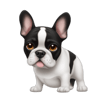Podcast
Questions and Answers
What type of epithelium lines the trachea?
What type of epithelium lines the trachea?
- Simple squamous epithelium
- Simple cuboidal epithelium
- Pseudostratified ciliated columnar epithelium (correct)
- Stratified squamous epithelium
Which layer of the trachea surrounds the hyaline cartilage?
Which layer of the trachea surrounds the hyaline cartilage?
- Submucosa
- Adventitia
- Perichondrium (correct)
- Mucosa
What type of cartilage is primarily found in the bronchi?
What type of cartilage is primarily found in the bronchi?
- Hyaline cartilage (correct)
- Elastic cartilage
- Articular cartilage
- Fibrocartilage
What is absent in bronchioles compared to bronchi?
What is absent in bronchioles compared to bronchi?
Which type of cell in the alveoli is responsible for secretion?
Which type of cell in the alveoli is responsible for secretion?
What primarily constitutes the lamina propria in the bronchi?
What primarily constitutes the lamina propria in the bronchi?
The interalveolar septa contain which of the following structures?
The interalveolar septa contain which of the following structures?
What type of muscle is present in the posterior wall of the trachea?
What type of muscle is present in the posterior wall of the trachea?
Which layer is the outermost layer of the trachea?
Which layer is the outermost layer of the trachea?
What major function do goblet cells serve in the respiratory system?
What major function do goblet cells serve in the respiratory system?
Flashcards are hidden until you start studying
Study Notes
Trachea
- Lined by pseudostratified ciliated columnar epithelium with goblet cells resting on a basement membrane.
- Lamina propria is deep to the basement membrane and composed of areolar tissue with elastic fibers and lymphocytes.
- Submucosa is composed of loose connective tissue containing large blood vessels and nerves.
- Mucous, serous and mixed types of glands are present in the submucosa.
- Hyaline cartilage is present outside the submucosa, covered by perichondrium.
- Cartilage is enclosed in an elastic fibrous membrane.
- Posterior wall of the trachea is devoid of cartilage.
- Trachealis muscle (smooth muscle) is present within the fibrous membrane, with outer longitudinal and inner circular layers.
- Adventitia is the outer most layer and composed of connective tissue, blood vessels and nerves.
Lung
- Sections of bronchi, bronchioles, alveoli, pulmonary artery branches, and pulmonary vein tributaries are present.
Bronchi
- Mucosa is made up of pseudostratified ciliated columnar epithelium, highly folded due to underlying smooth muscle fibers.
- Lamina propria contains connective tissue, smooth muscle fibers, and mucous and serous glands.
- Hyaline cartilage is seen outside the lamina propria in small pieces.
Bronchiole
- Mucosa is composed of simple columnar cells with folds.
- Lamina propria contains some connective tissue and smooth muscle fibers, responsible for the folds of the mucous membrane.
- Glands and cartilages are absent.
Alveoli
- Lined by simple squamous cells.
- Interalveolar septa are thin and contain capillaries, elastic fibers, and various cell types like fibroblasts, mesenchymal cells, and macrophages.
- The lining cells of alveoli are of two types:
- Squamous (Type 1) cells: They are simple squamous cells with prominent nuclei projecting into the lumen.
- Secretory (Type 2) cells: These are rounded cells that project into the lumen.
Studying That Suits You
Use AI to generate personalized quizzes and flashcards to suit your learning preferences.




